Wayne Smith’s Wallabies team to celebrate a half-century covering the game
This Tuesday marks 50 years since Wayne Smith’s time in journalism began, and to celebrate the milestone he’s picked his best Wallabies side from that era.

My time in journalism began 50 years ago today, with this following breathless conversation with the late chief-of-staff of the now defunct Brisbane Telegraph, Frank Watkinson.
Me: Good morning, sir. I was told to report to you.
Watkinson (sizing me up and down and seemingly not liking what he saw): Do you have a coat?
Me: Yes sir.
Watkinson: Wear it.
And so, coatless and shamed, I was put to work as a first-year cadet.
FULL LIST: Wayne Smith’s Wallabies team of the past 50 years
I didn’t start particularly well as a general reporter, having baulked at doing a “death knock”. As I recall the details of my first assignment, a man had attempted to run a level crossing at Pinkenba, in Brisbane’s east, and hadn’t quite made it. As luck would have it, his home was located quite nearby and so the senior police roundsman I was accompanying decided it would be a good idea if I got some reaction from the man’s family while he stayed behind to gather more information at the death scene.
Nothing in my 17 years had ever prepared me for the sight of a grieving widow, half a dozen hysterical children and a courageous young priest trying to make sense of it all. I stood on the front door and peered down the gloomy hallway to the end room where this newly unfolding tragedy was beginning to play out. Decisive action was definitely called for and I took it. I turned on my heel and fled.
Nor was I a success as a finance reporter. Indeed, even now, the phrase “complete disaster” springs to mind, uninvited. I had misread an “8” for a “3” in the scribbled Queensland Press quote on the Stock Exchange blackboard and, in the blink of an eye, had sent my own company plunging towards bankruptcy. The only good thing about this episode was that during the “debrief” conducted by my editor, John Wakefield, it was gently pointed out to me that perhaps I should consider spectacles. I’ve basically worn glasses ever since and it’s a good thing too, because they allowed me in future to spot Wakefield coming down the corridor and to jump willy-nilly through the nearest open door. Not quite sliding doors but almost …
I had hoped to cover politics but the prospects of that were fading fast. Indeed, unless I found my niche and fast, I would be out on my ear.
It was only when the paper’s rugby writer, Gerard Lee, resigned to write a book of poetry – as rugby writers were wont to do back then – that my career took a slightly upward turn. A quick search of the personnel files indicated that I was the only cadet at all familiar with the game – seemingly playing halfback for St Laurence’s College’s Fourths was deemed ample training – and so I was set loose on an unsuspecting sport.
I still recall my first question as a sportswriter: “So, can anyone tell me how to get to Ballymore?”
Armed with these necessary directions and telling myself I was probably on my last chance, I set out with considerable enthusiasm and essentially zero knowledge on what turned out to be a fabulous lifetime’s adventure.
I remember going into the Queensland dressing room after they had beaten the British Lions in the first rep match I ever covered and gravitating towards the smallest person I could find. As it turned out, this was the Queensland halfback Mick Barry, a man who in time became a respected ear, nose and throat specialist and, tragically, died last November when he got himself into difficulties in the water at Currumbin.

Overwhelmed by the stunning victory over the Lions, I waxed lyrical on Barry’s Test selection prospects. “Ahh,” he discretely pulled me up, “I think you might find there is someone down south who may have a say in all of this.”
Really? Who might that be, I ventured nervously. “His name is John Hipwell,” said Barry. “And he’s pretty good.”
That was a daunting and somewhat demoralising lesson. I had literally no knowledge of a player who, half a century later, I would rate as the best Australian halfback I ever saw. Clearly I had a lot to learn.
In that. nothing has changed. Rugby is constantly evolving and happily I have had some wonderful mentors who helped steer me through all the rocks and shoals. Harry Shaw, father of former Wallabies captain Tony Shaw, navigated me through the initial reefs, waiting at the foot of the stairs at Ballymore as I made my way down from the press box and grilling me remorselessly. It was the same with Bob Templeton and John Connolly. And when I had moved from The Courier-Mail to The Australian and put my Queensland parochialism aside – well, just a little — Bob Dwyer, too, began to play a role in broadening my rugby education.
It was indicative of what I have constantly found in the game over the years, its willingness to move on. I may have given Dwyer something of a hard time when he had dropped Paul McLean and Roger Gould for the Ella brothers in the 1982 Test against Scotland. So, once again Bob, my apologies.

The first Test I ever covered, Australia against South Africa at the Exhibition Grounds in July 1971, was the most controversial of my career, with anti-apartheid demonstrators targeting the Springboks. Right from the start, then, I became aware that covering rugby would allow me to scratch whatever itch I still had to become a political writer. The South African issue would rumble for another 20-odd years and in the end rugby would be provided with a ringside seat as Nelson Mandela used the game for his own purposes, using it to help bind his Rainbow Nation together.
Through the trials of 2017, as the then Australian Rugby Union sought to cull a Super Rugby side, and again in the following two years as the Israel Folau issue burned brightly, then subsided, then burst into flames all over again, I began to seriously question whether politics would cause the game to self-destruct.
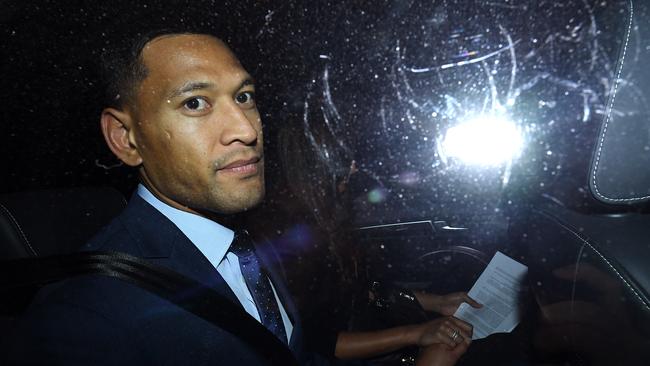
In the end, however, rugby rode out the bizarre woke politics storm and began to pull itself together. Now, once again, rugby is having rugby-like arguments. And, in that spirit, I would like to offer up what I consider to be the best Australian side of the past half-century when I have been covering the game.
You’ll hate it, I know you will. For starters, there is no David Campese. And I have broken up the Horan-Little marriage, not to mention dissolving the Holy Trinity of Mark Loane, Shaw and McLean. And consider all the great names I passed over in arriving at John Hipwell at halfback.
But, hey, if a man can’t get a little eccentric covering the same sport for 50 years, when can he?
–
On Australia Day 1971, Wayne Smith started work as a journalist and over the last half-century has covered the highs and lows of Australian rugby. Here is his best Australian team of that era.
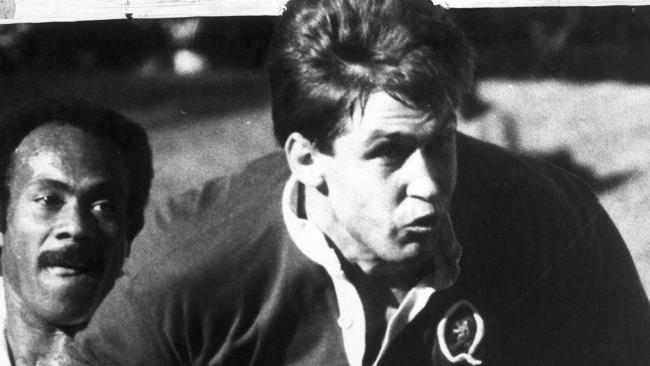
15 Roger Gould
Needless to say, Matt Burke and Chris Latham strongly contested the fullback position, but no one could match the sureness under the high ball, the howitzer-like kick, the physicality and, yes, the swagger of Gould. From the moment he scored a try in each of his first three Tests against the All Blacks – the Wallabies win the 1980 series 2-1 – he reshaped the way Australia assessed fullback play.
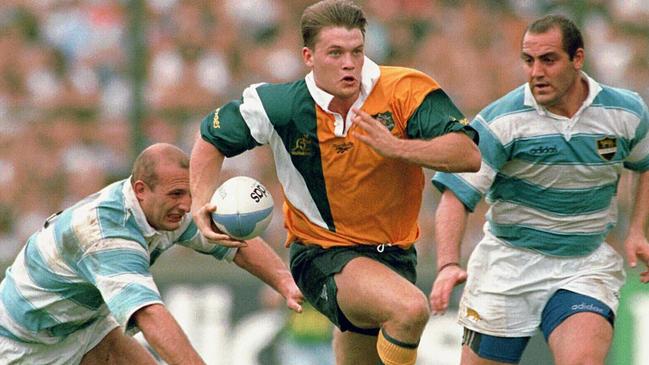
14 Ben Tune
How could I possibly select an all-time Australian XV – or at least of the last 50 years – without David Campese? Actually, quite easily. There are two sides to rugby – attack and defence. Campo was brilliant only when he had the ball in hand. Tune was the ultimate winger in my opinion, a man who would put his body on the line against anyone, even Jonah Lomu.
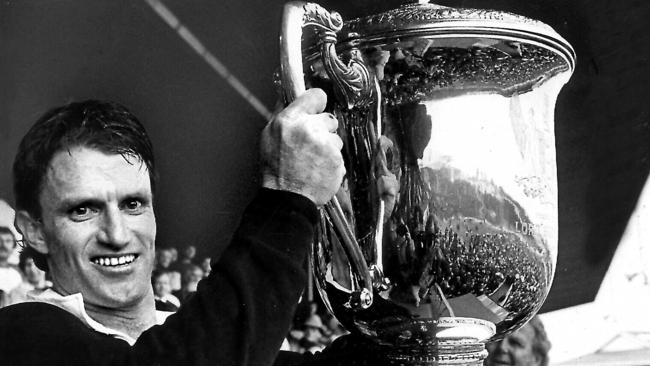
13 Andrew Slack
I know this is supposed to be a contest between Australia’s two World Cup-winning outside centres Jason Little and Daniel Herbert, but from the moment that Slack played his first Tests against Wales through to the inaugural World Cup in 1987, he displayed the best hands I have ever witnessed. He led Australia to historic Grand Slams and Bledisloe Cup triumphs – in New Zealand, for goodness sake.
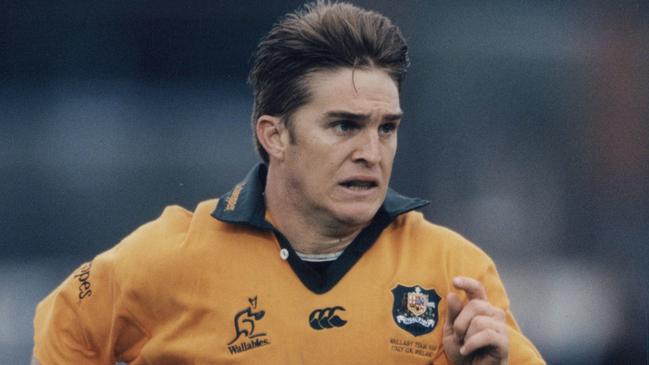
12 Tim Horan
No one close. Best inside centre of any country ever in my opinion.
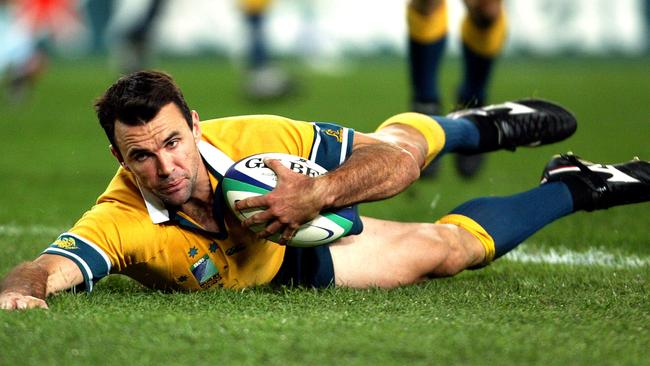
11 Joe Roff
I found myself drawn to two remarkably similar players for the left wing berth, Roff and the great Brendan Moon. Both covered the ground with extraordinarily long strides, making it difficult to bring them down. And then Moon had one of the greatest right-hand fends I’ve ever seen. But Roff played 86 Tests for Australia, was extraordinary during the 1999 World Cup win and turned the tide of the 2001 series against the British and Irish Lions by intercepting Jonny Wilkinson’s pass.
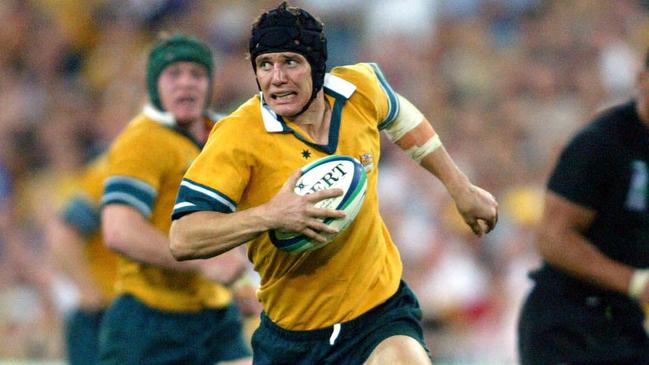
10 Stephen Larkham
I will probably be run out of Queensland for not selecting Paul McLean or Michael Lynagh and both would have been fully deserving of the “10” jersey. Even Quade Cooper had a brief moment in the sun before coming unstuck. And then there is Mark Ella, who shone like Hayley’s Comet as he streaked across the sky for just 25 Tests. But for sheer consistency of brilliance over a career of 102 Tests, Larkham stood supreme. Not only did he take the ball to the line, he took it there at speeds which caught oppositions napping.

9 John Hipwell
Another awkward one, given the brilliance of 1991 World Cup-winning captain Nick Farr-Jones and the 1999 World Cup vice-captain George Gregan, while Will Genia at his peak was regarded as the best halfback in the world, one who even the All Blacks went to school on. Sadly, I never got to cover Ken Catchpole but Hipwell’s Test career spanned three decades, the 1960s, 1970s and 1980s, and he was never anything short of inspirational.
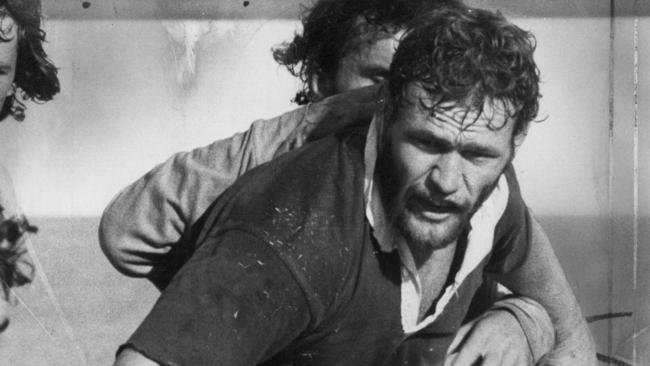
8 Mark Loane
A two-way contest – Loane versus Toutai Kefu. No one else approaches them. Kefu was a mesmerising ballrunner, one who will always be remembered for ensuring John Eales finished his career as a winner against the All Blacks in 2001. But it was under Loane’s leadership that Queensland enjoyed its first golden age and in doing so brought Australia into world leadership in the game. “A Train Without a Station” was his nickname and that was how he took the ball up.

7 David Pocock
Gee, it a hazardous job selecting an all-time Australian side. George Smith deserves to be hailed for the astonishing service he gave Australia … and kept on giving. David Wilson was an underrated but still brilliant openside flanker, so too Simon Poidevin, Jeff Miller, Phil Waugh and Michael Hooper. But over two World Cups, 2011 and 2015, Pocock was very nearly the best player on the globe. Indeed, had Australia beaten the All Blacks in the 2015 World Cup final – which, admittedly, they were never really likely to do despite getting within four points – he would have beaten Dan Carter for the award. We are, of course, talking about the man who played No 8 in that tournament but I will always see him with a “7” on his back.
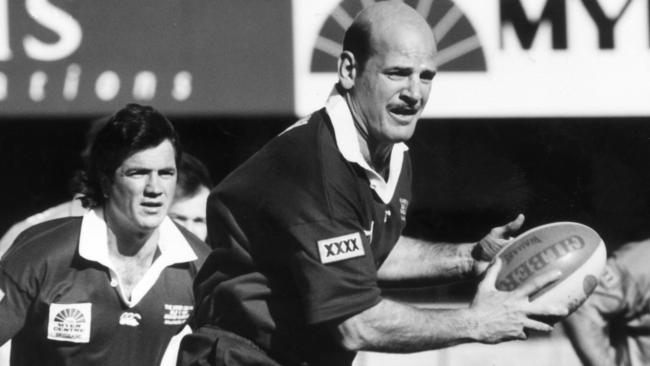
6 Tony Shaw
One-third of the so-called “Holy Trinity” with Paul McLean and Loane. A ferocious competitor, one who struck fear into opposing teams. Poidevin played enough at “6” to be considered, so too his counterpart in the 1999 World Cup side, Matt Cockbain, and even the enigmatic Rocky Elsom who led Australia right up to the brink of the 2011 World Cup before being dropped as skipper. Yet Shaw was unyielding, the ideal man to lead Australia to a series win over Five Nations champs Wales in 1978 and then to hold a depleted injury-hit Wallabies together at Eden Park in August that year to record the Wallabies’ most famous victory at the All Blacks’ fortress.
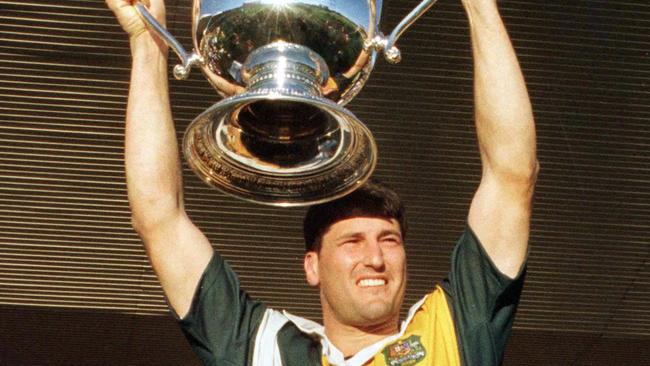
5 John Eales
Captain. Best player I ever covered.
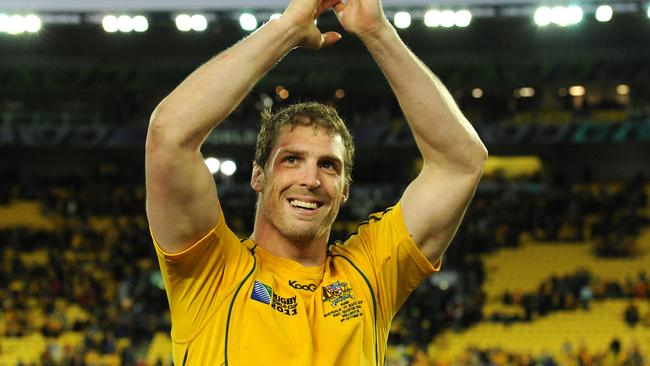
4 Dan Vickerman
Their careers were separated by 20-odd years but Vickerman would have enjoyed playing alongside Shaw. They were both take-no-prisoners types of players. While Australia did have the occasional lineout ace like David Hillhouse, Peter McLean, Steve Cutler and Steve Williams in the 1970s and 1980s, over the past two decades it has produced some seriously impressive second-rowers: David Giffin, Garrick Morgan, Rod McCall, Justin Harrison, Nathan Sharpe. But Vickerman stood tallest.
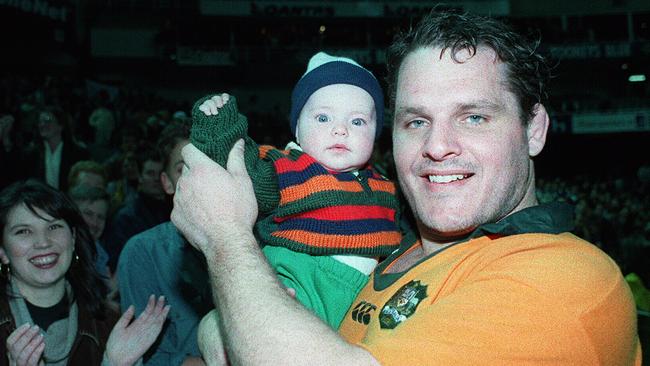
3 Ewen McKenzie
Taniela Tupou is reshaping how Australians think of tighthead props. Suddenly it’s a very sexy position. But until he came along, however, tighthead was very much a place for piano movers. Andy McIntyre cemented himself there on the 1984 Grand Slam tour, while Andrew Blades ensured the Australian scrum wasn’t going anywhere during the 1999 World Cup campaign. But McKenzie played 51 Tests in one of the most gruelling positions and still had enough energy left over to become one of Australia’s finest coaches.
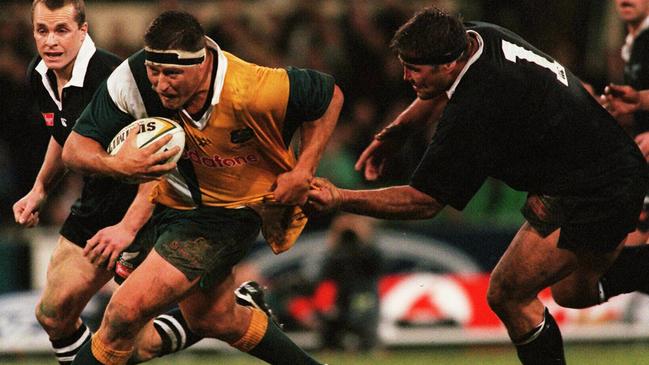
2 Phil Kearns
In most people’s minds, this is a no-brainer. Kearns, a dual World Cup-winner is regarded as one of the greats of Australian rugby. No complaints here. But he stood on some great shoulders, none broader than Tom Lawton who dramatically reshaped global opinion about the Wallabies scrum on the 1984 tour of Great Britain. And I’m not convinced that if I wanted a hooker to play for my life that I wouldn’t pick Michael Foley, who knows more about scrums that virtually any man in the game. But how could you not give the jersey to the man who gave the two-fingered salute to Sean Fitzpatrick?

1 James Slipper
Not an especially fashionable position, loosehead. Indeed, most serious contenders have played a significant amount of their careers at tighthead where the scrummaging demands are ever fiercer. Topo Rodriguez played all his Tests for Australia at loosehead but before that he was regarded as the world’s most fearsome tighthead for the Pumas. World Cup looseheads Tony Daly and Richard Harry both put in tremendous shifts in the “1” jersey but Slipper – the only Wallaby in the current Test side – has put together a century of internationals for Australia and rightly been regarded as one of the best all-round looseheads – a good scrummager but also highly useful in attack and defence – in world rugby. While Hipwell played in the first Test I ever covered back in 1971, Slipper was there in the most recent.
